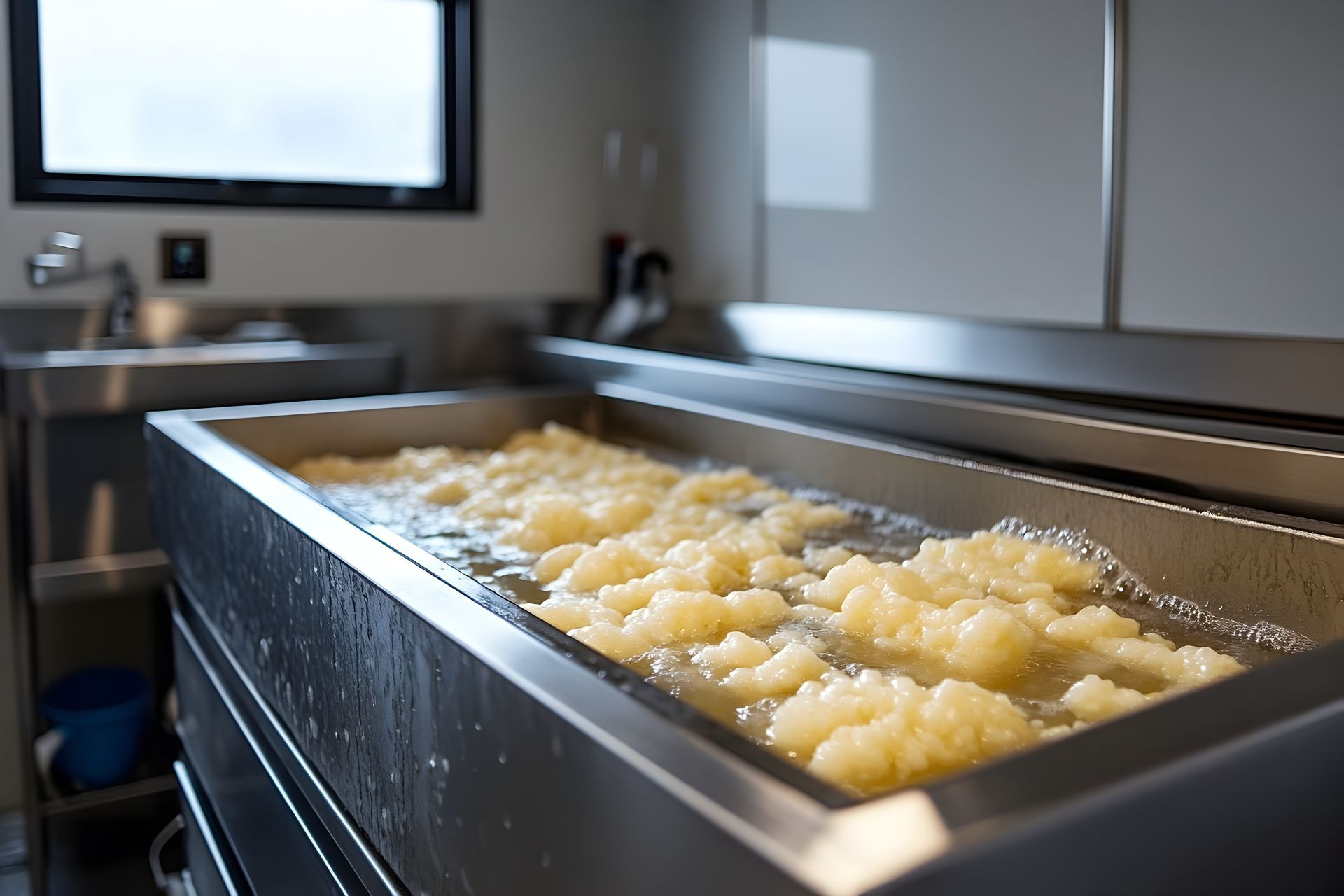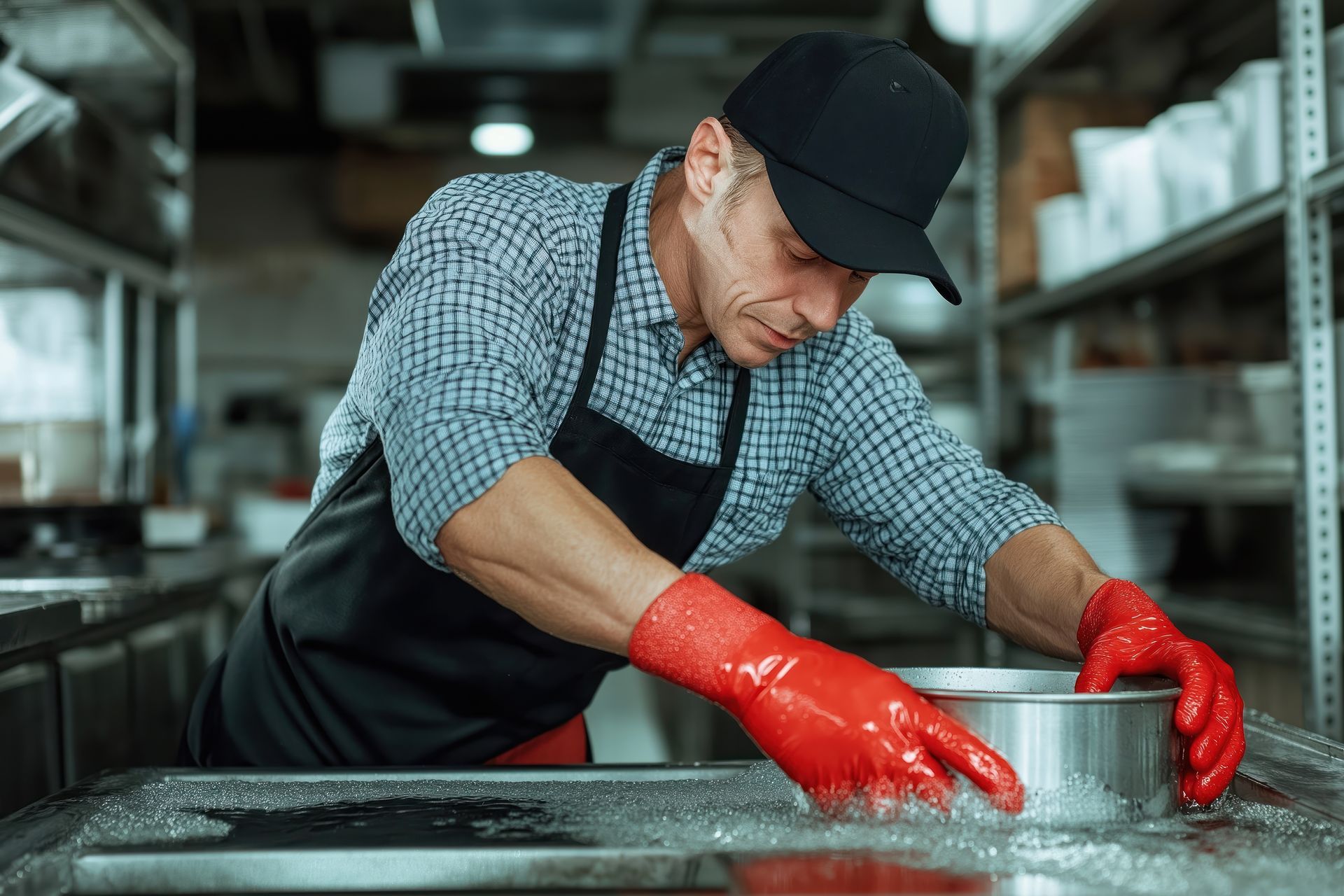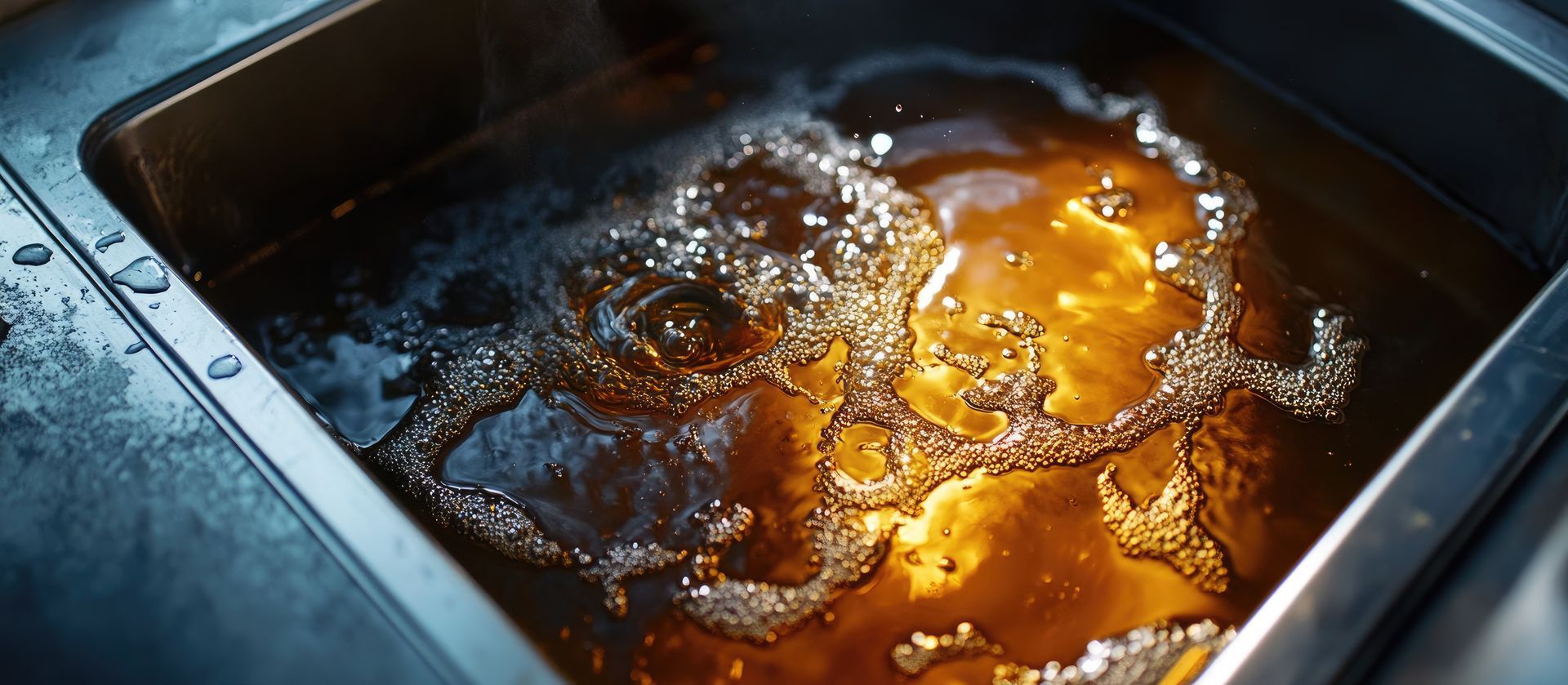Why Indoor Grease Traps Fail More Often in High-Traffic Locations

In high-traffic food service environments like busy restaurants, cafeterias, hotels and event centers, grease management is critical to smooth operations. While many of these kitchens rely on large, outdoor interceptors to handle the bulk of their FOG load, it’s not uncommon to also find smaller, under-sink or in-floor grease traps inside, especially near dish stations or prep sinks. These indoor units often seem convenient, but in fast-paced settings, they’re also the ones most likely to clog, overflow or cause unpleasant odors.
The Problem with Indoor Grease Traps in Busy Kitchens
Indoor grease traps, also known as hydromechanical grease interceptors, are typically installed beneath sinks or in the floor near dishwashing stations. Their purpose is to slow the flow of kitchen wastewater and separate out grease, fats and oils before they enter the sewer system or a larger underground grease trap.
While these units are useful for small-scale operations or as a first line of FOG defense, they are often undersized and overloaded in high-traffic environments. Some of the common pain points include:
1. Frequent Clogging Due to Limited Capacity
The most basic issue is simple volume. Indoor grease traps are small, often just a few gallons in capacity. In a busy kitchen where hundreds or even thousands of meals are prepared daily, these units fill up fast.
When traps exceed their capacity, grease and solids begin to bypass the system, resulting in clogged pipes, slow drainage and backups. Even with regular maintenance, a small trap may struggle to keep up with the flow from multiple sinks, dishwashers and floor drains.
2. Neglect and Inconsistent Maintenance
Because they’re hidden under sinks or floors, indoor grease traps are often “out of sight, out of mind.” Staff may not even realize how quickly the trap is filling up, especially during peak hours. When cleaning is overlooked or delayed, the grease hardens and builds up, reducing flow and creating blockages.
Inconsistent maintenance is one of the top reasons indoor traps fail. If cleaning schedules aren’t closely followed, or if staff lack training on grease trap upkeep, even a well-functioning unit can fail within days.
3. High Temperatures and Detergents Break Down Grease
Busy kitchens use hot water and strong detergents in dishwashers that can temporarily emulsify grease, making it harder for small traps to effectively capture FOG. When the water cools further down the line, that same grease solidifies in pipes, leading to hidden buildup and potential sewer clogs if it’s not caught by a larger interceptor.
In short, an indoor trap might appear to be working, while grease is actually accumulating farther into your plumbing system, where it’s harder (and more expensive) to remove.
4. Odors and Sanitation Issues
Indoor grease traps can quickly become sources of foul odors if not emptied and cleaned frequently. In high-traffic kitchens, odor can quickly become off-putting for customers, especially in open-kitchen or front-of-house environments.
Bacteria thrive in stagnant, grease-filled traps and without routine service, they become breeding grounds for health and sanitation risks. Unlike outdoor interceptors, indoor traps release odors directly into kitchen areas, where they can affect staff and customers alike.
5. Lack of Integration with Larger Grease Management Systems
Another issue in smaller kitchens is that indoor traps are often standalone units, not connected to a centralized grease management system. This means staff are solely responsible for emptying, monitoring and maintaining them, sometimes without a standardized process or clear accountability.
Atlanta food service businesses must go through a rigorous permitting process, so they are typically required to have large outdoor interceptors appropriate for their volume. However, smaller kitchens that rely solely on hydromechanical grease interceptors can run into problems if cleanings are missed or there’s inconsistent service.
Tips to Minimize Indoor Grease Trap Problems
If your kitchen relies fully or in part on indoor grease traps, consider these best practices to reduce the risk of problems:
- Establish and follow a strict cleaning schedule based on kitchen volume
- Train staff on proper cleaning procedures and what signs to watch for
- Ensure strainers and solids interceptors are properly used and maintained to minimize food waste entering the trap
- Be sure your staff members are not pouring fryer oil or excessive grease down the drain
- Coordinate with your grease trap service provider to clean indoor grease traps at the appropriate intervals
Take Control of Your Grease Management in Atlanta
If your indoor grease traps are constantly clogging, overflowing or causing foul smells, it’s time to consider a better approach. Since 2007, Southern Green Industries has been providing comprehensive grease trap cleaning and used fryer oil management solutions for high-volume kitchens.
Call Southern Green Industries at (404) 419-6887 to request a free quote, or schedule a consultation here on our website.
Recent Blog Posts
Contact us Today for a FREE Quote
We are committed to making grease trap cleaning and fryer oil recycling as clean and easy as possible. If you’d like to learn more about our services or get a quote, give us a call at (404) 419-6887.



